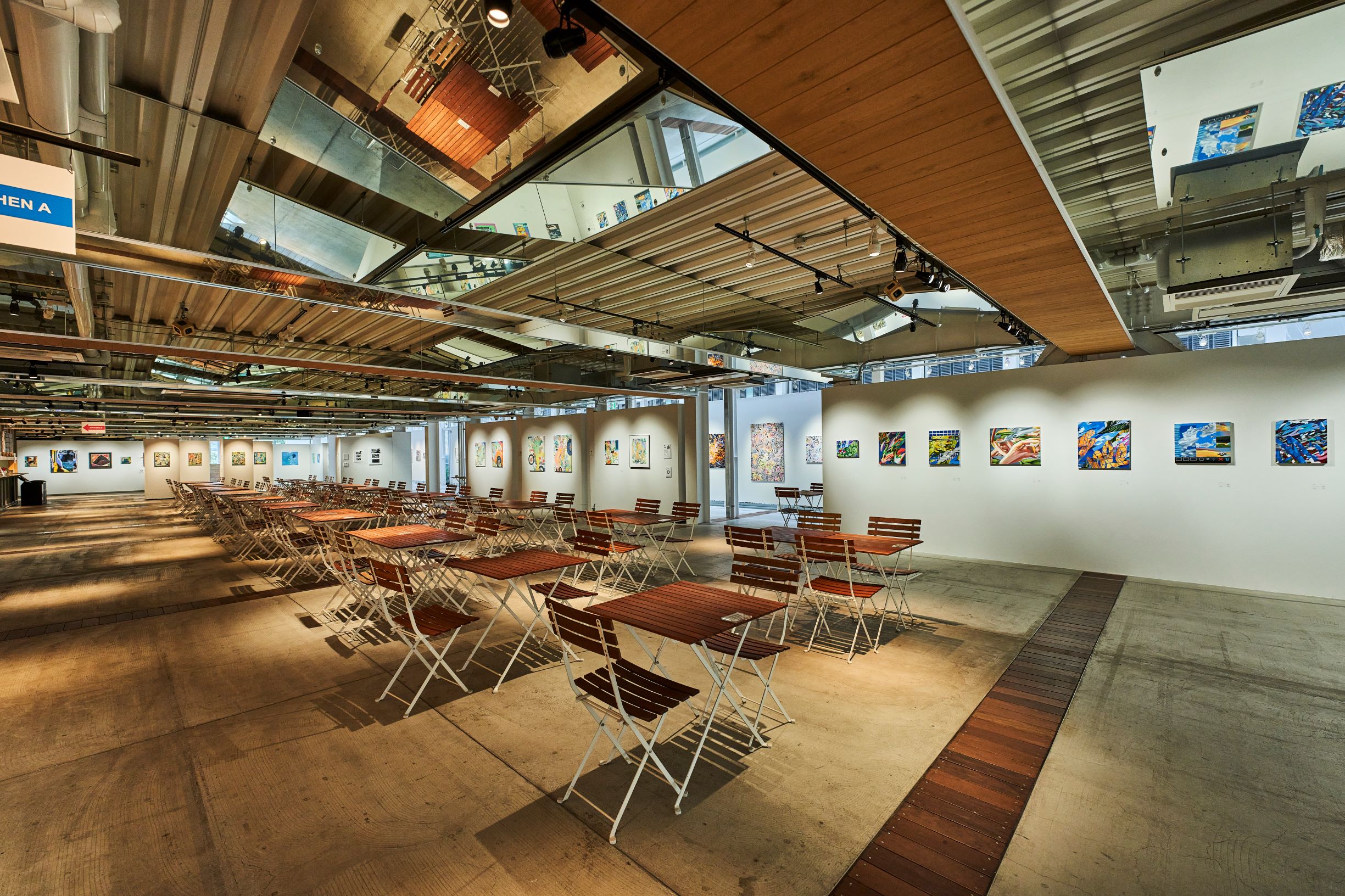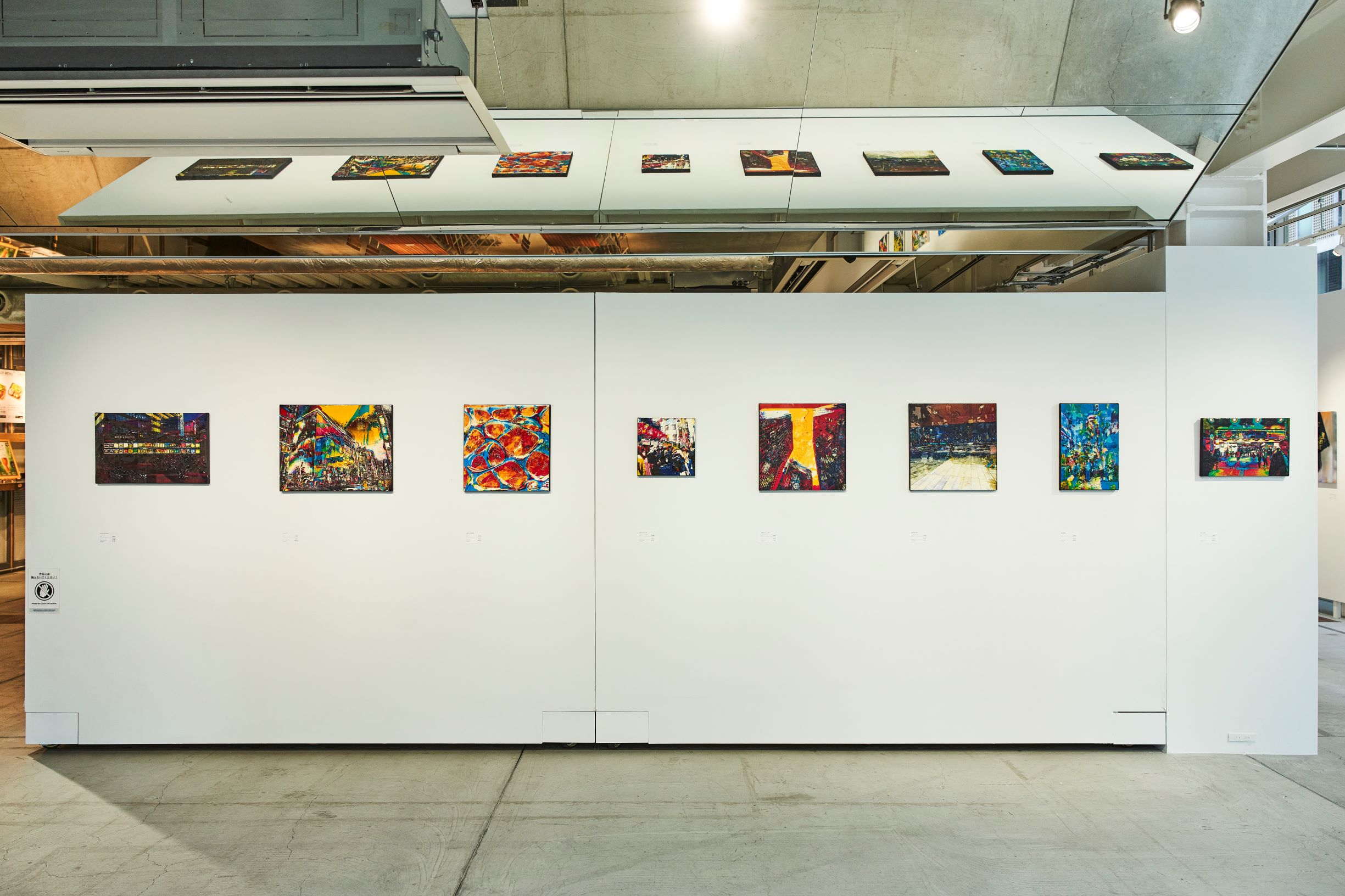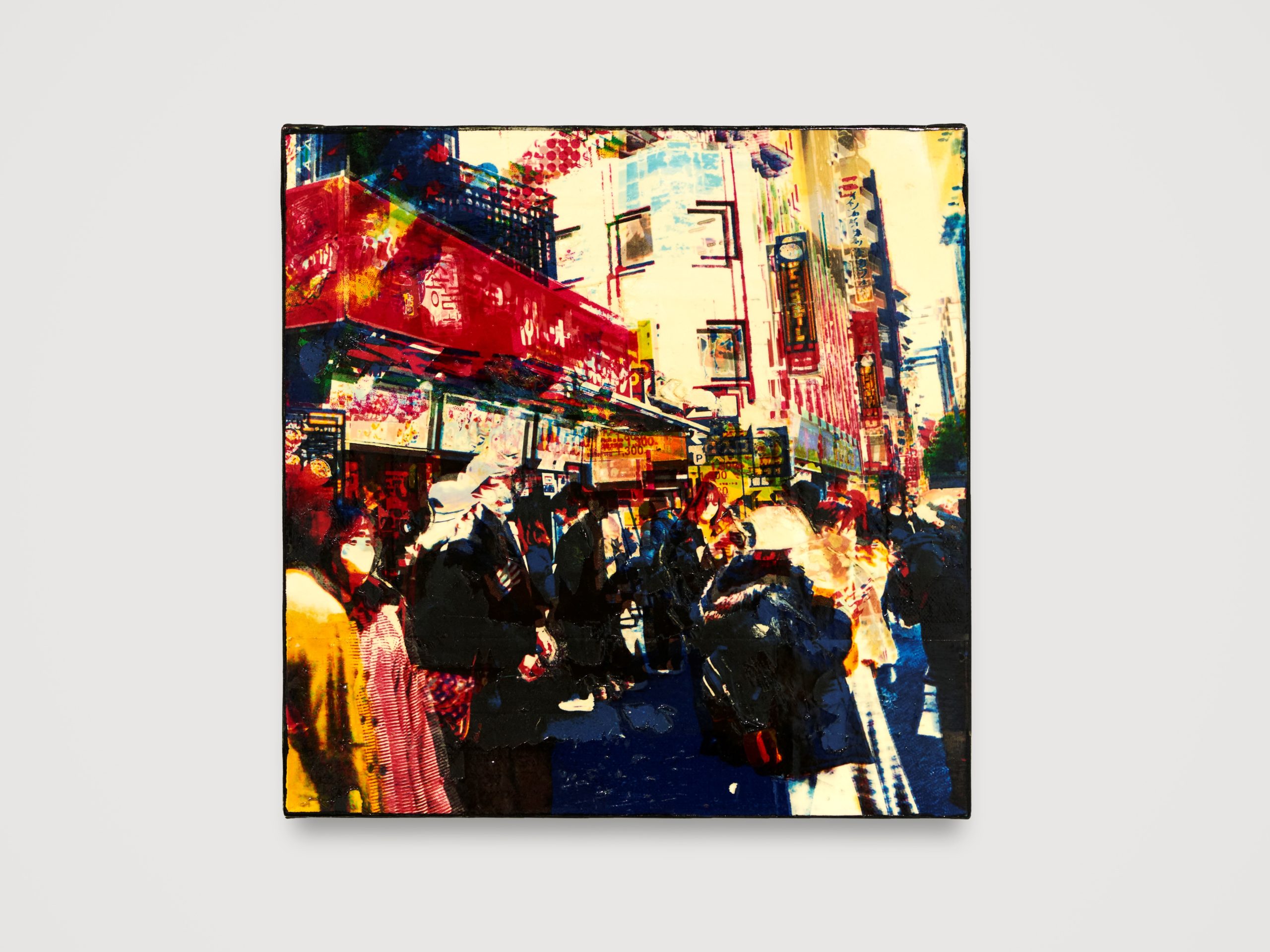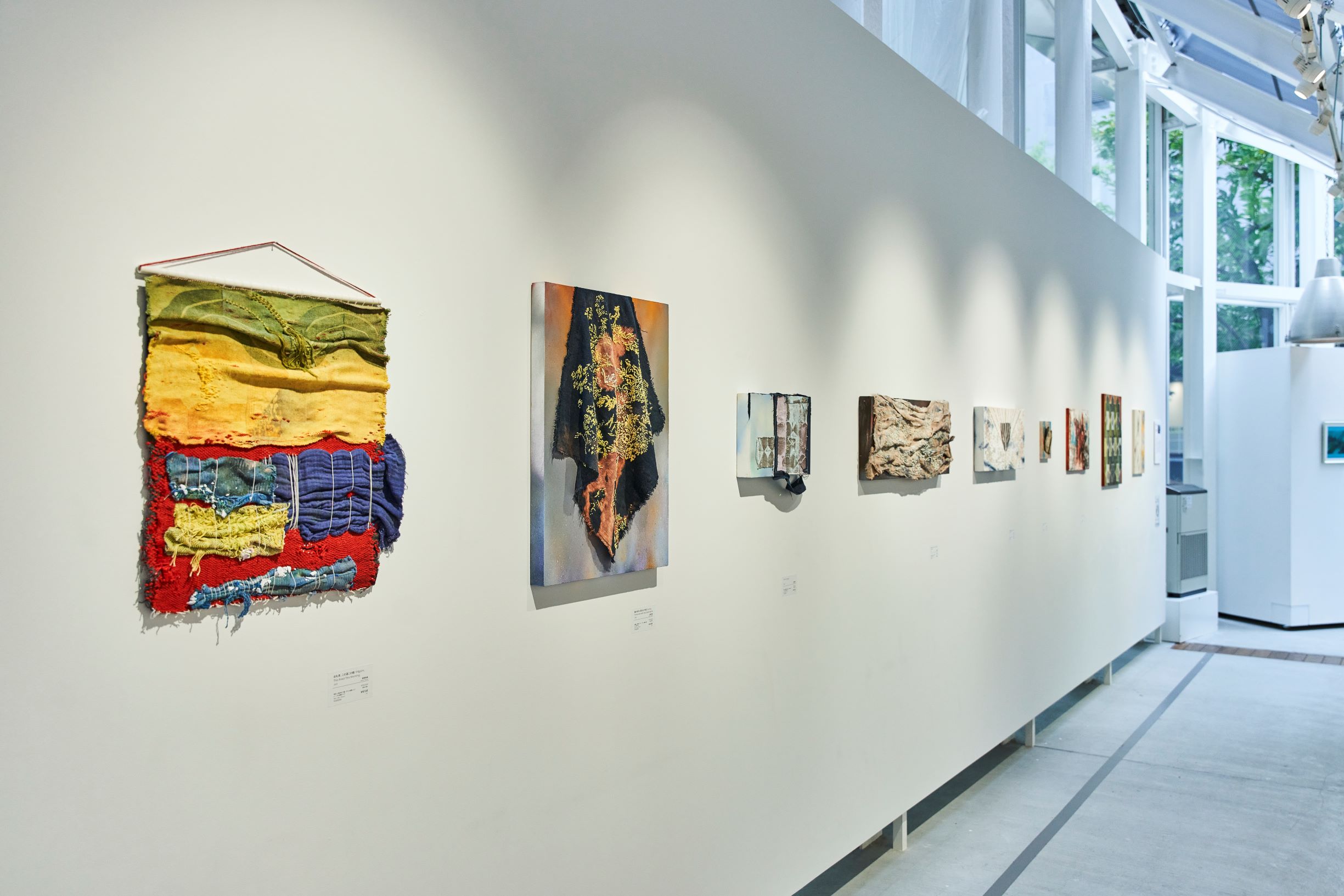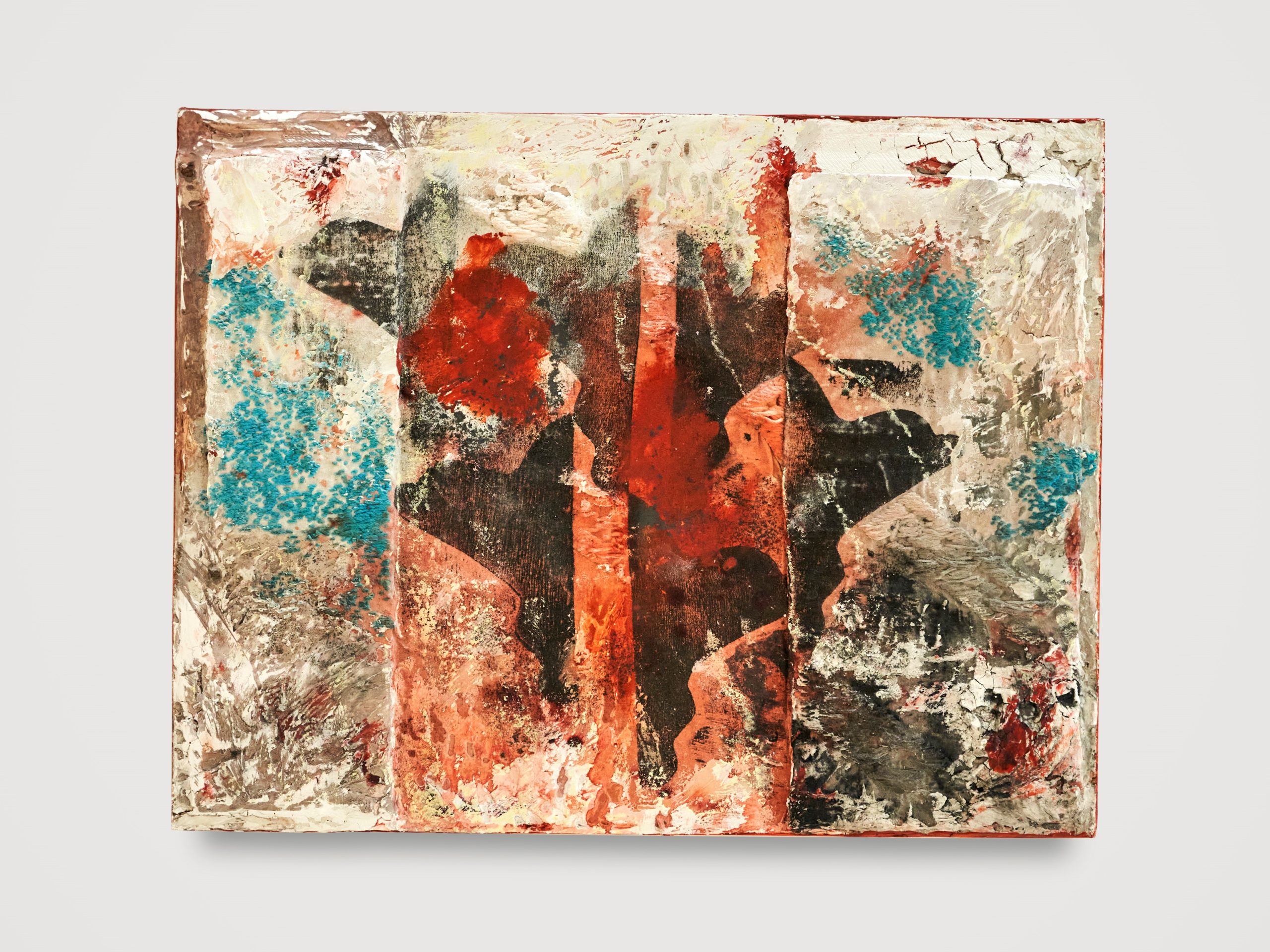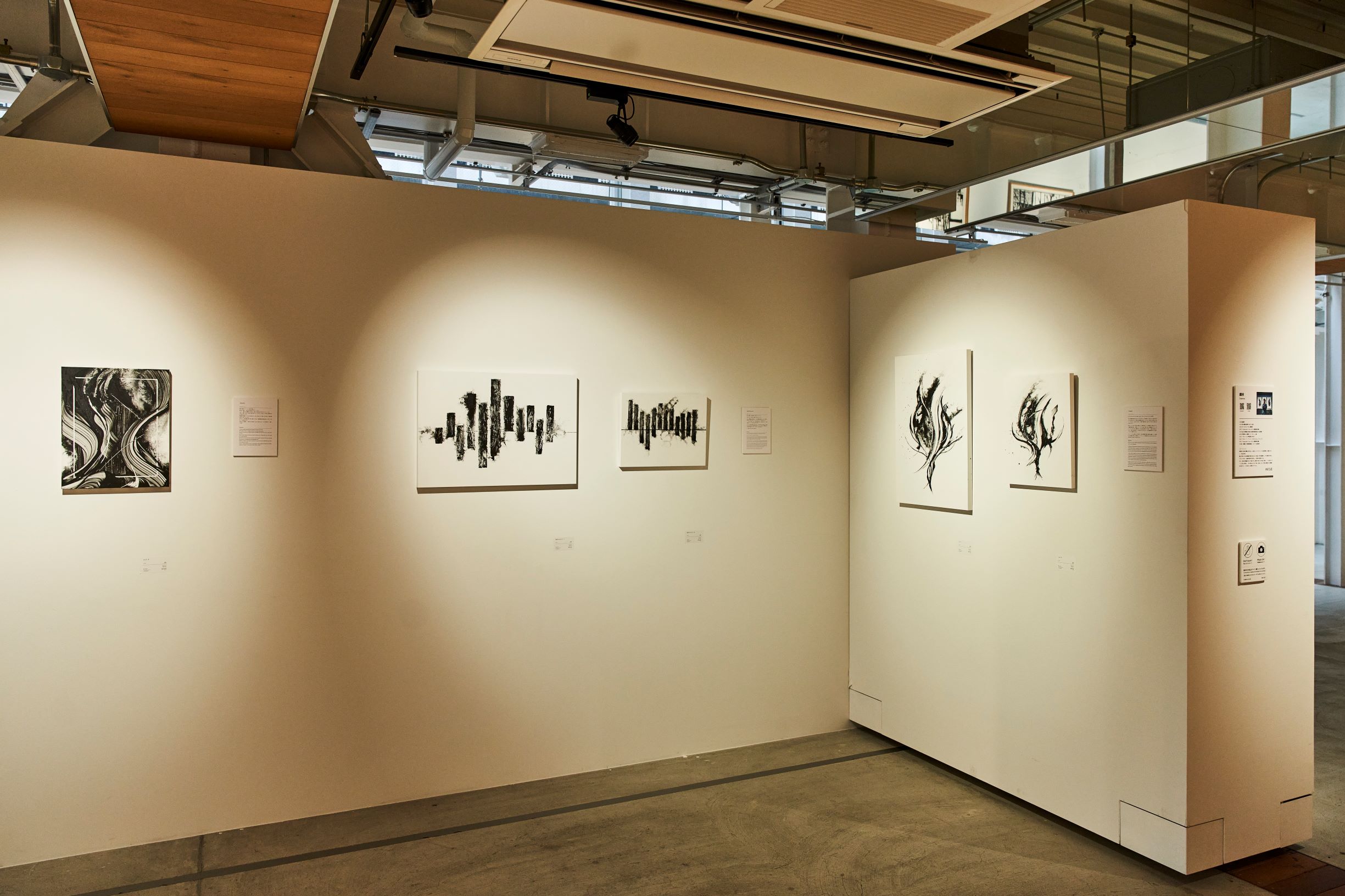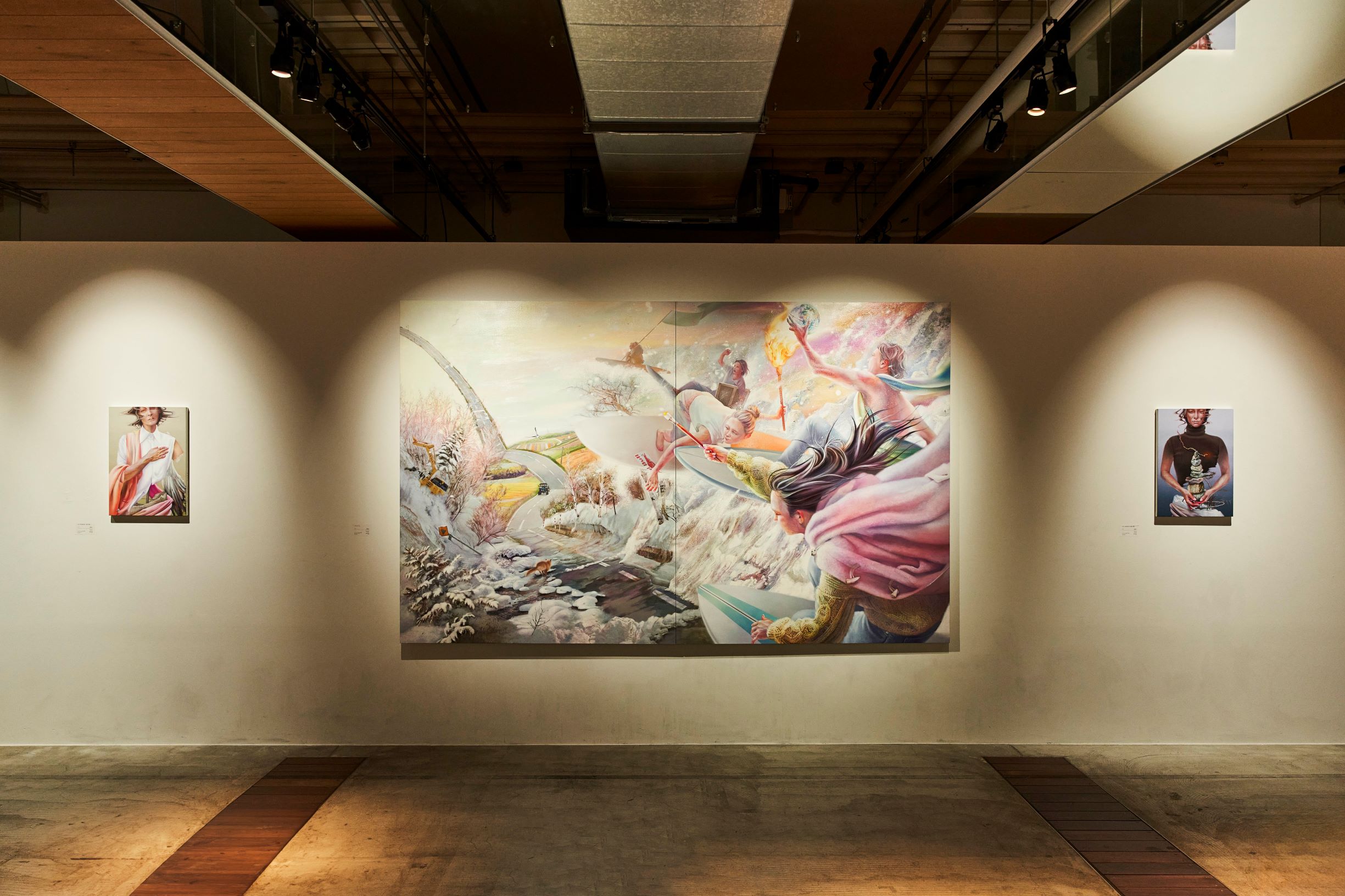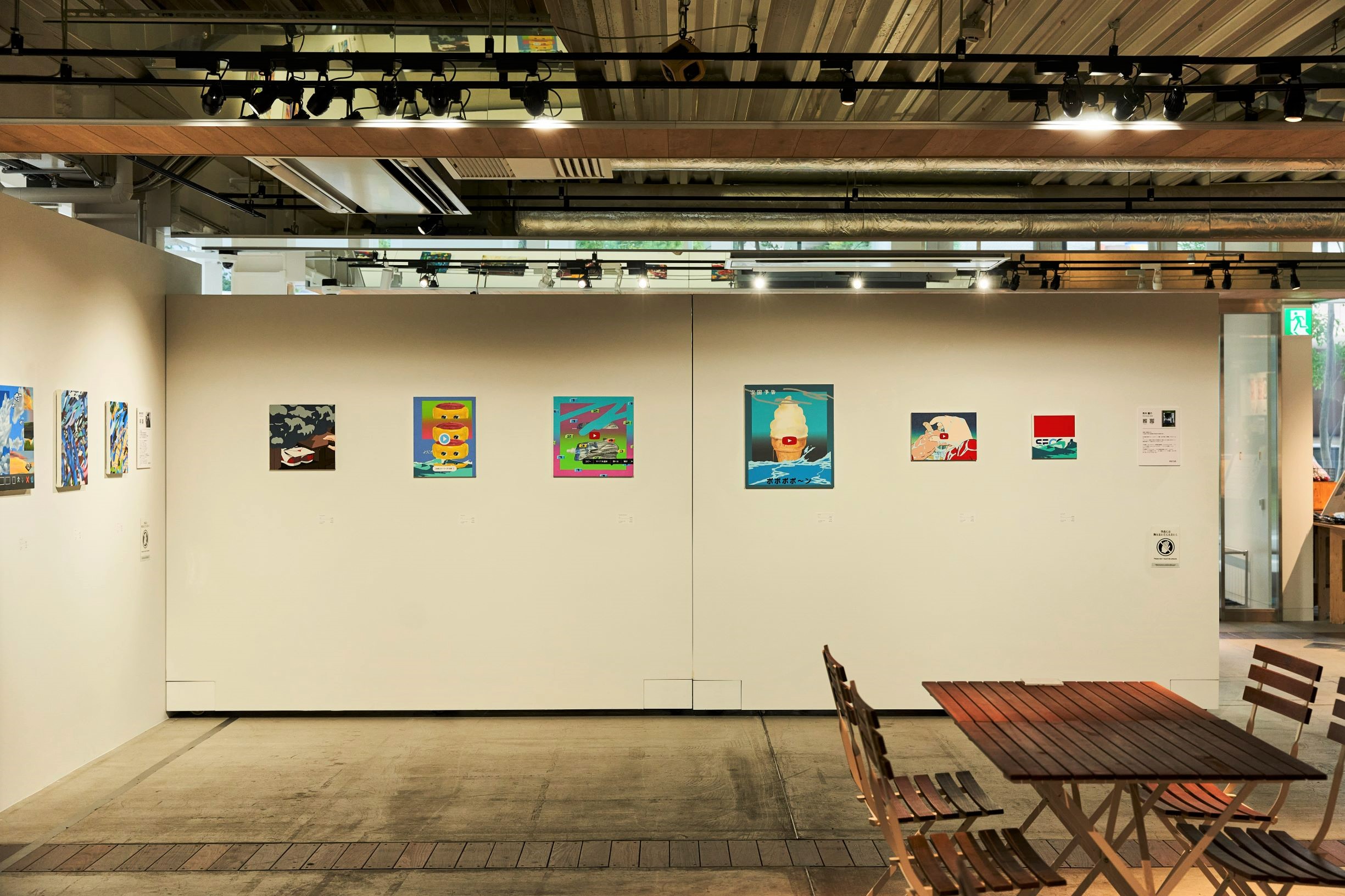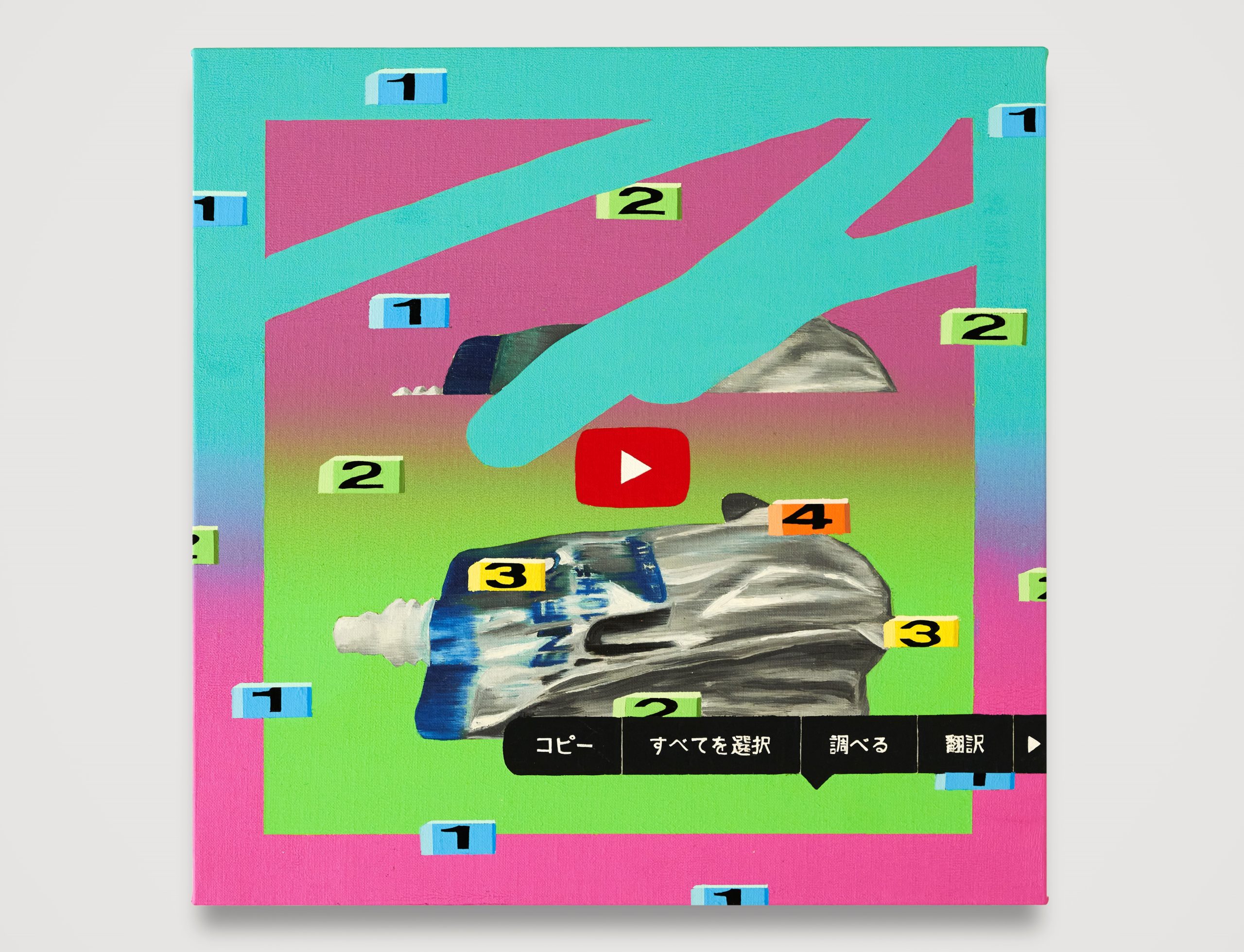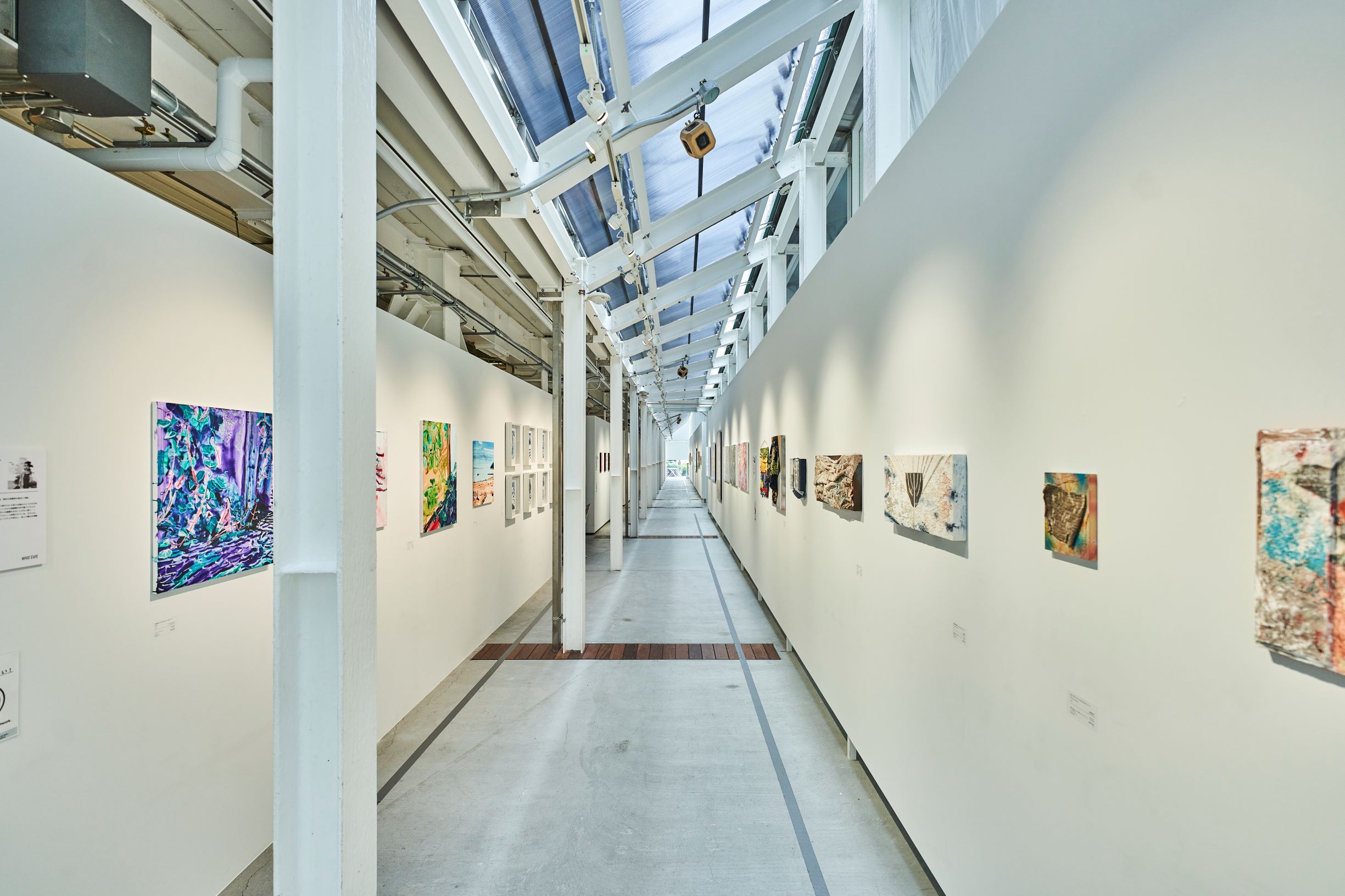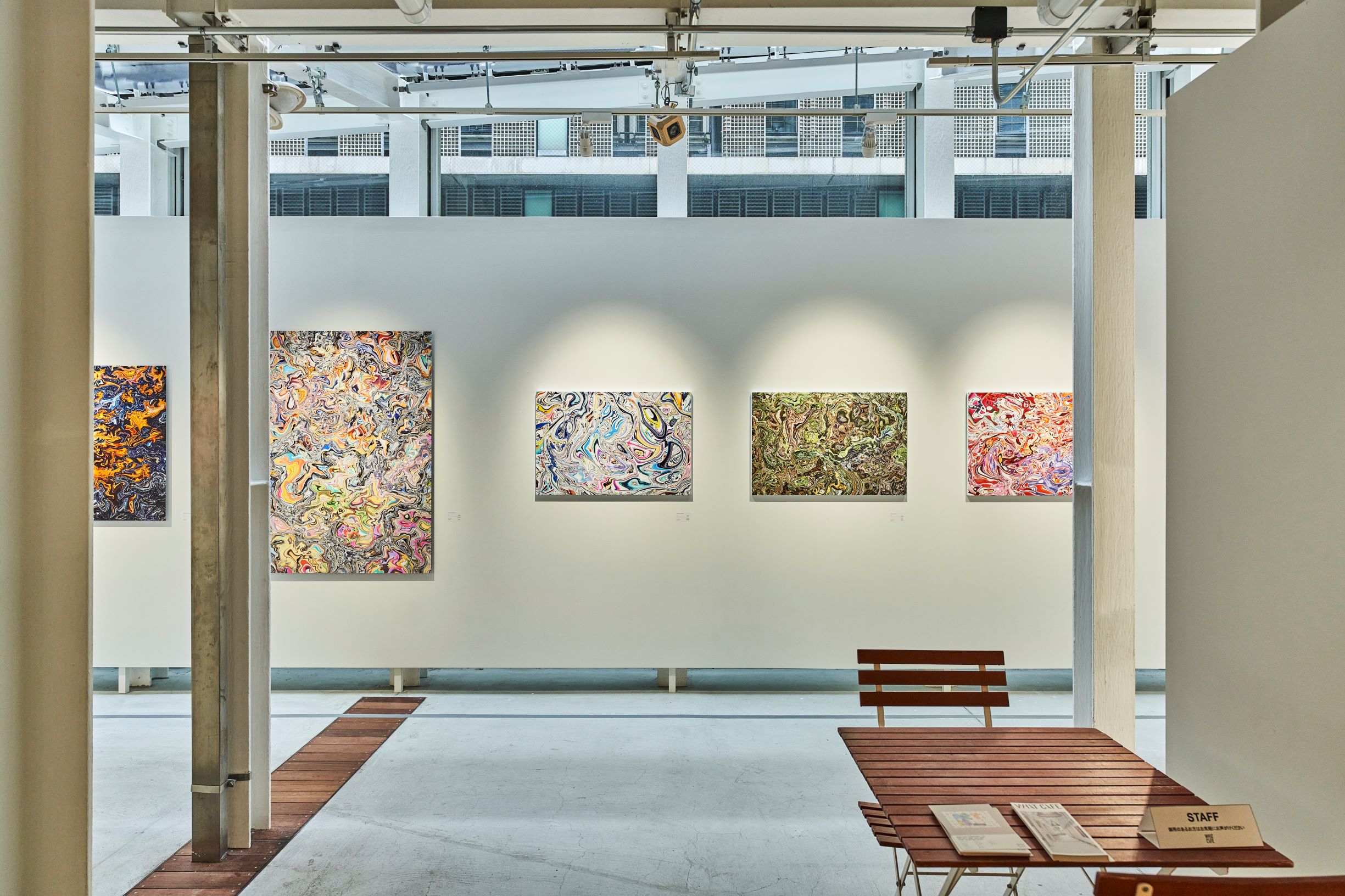展示レビュー
WHAT CAFE EXHIBITION vol.29
WHAT CAFE EXHIBITION vol.29 展示レビュー
WHAT CAFE EXHIBITION vol.29 Review
WHAT CAFE EXHIBITION vol.29 Review
WHAT CAFE EXHIBITION vol.29 Review
2023/10/01 | レビュアー:髙橋雛 レビュアー:Hina Takahashi レビュアー:Hina Takahashi レビュアー:Hina Takahashi
2023年9月 17日(日)から 10 月 1 日(日)まで、WHAT CAFEにて「WHAT CAFE EXHIBITION vol.29」が開催されました。今回はアーティスト19名が参加し、制作を通して世界との関係を考察し、作品を現実に戻すことで再び世界との関係性を結び直そうと試みる各作家たちの取り組みと作品が一同に展示されました。
WHAT CAFE EXHIBITION vol.29, which brought together 19 artists, was held at WHAT CAFE from September 17 (Sun) to October 1 (Sun), 2023. The exhibition centered on exhibiting both the efforts and artworks of each artist, who examined their relationship to the world through making art, and attempted to rebuild their relationship to the world by bringing their artwork back to reality.
WHAT CAFE EXHIBITION vol.29, which brought together 19 artists, was held at WHAT CAFE from September 17 (Sun) to October 1 (Sun), 2023. The exhibition centered on exhibiting both the efforts and artworks of each artist, who examined their relationship to the world through making art, and attempted to rebuild their relationship to the world by bringing their artwork back to reality.
WHAT CAFE EXHIBITION vol.29, which brought together 19 artists, was held at WHAT CAFE from September 17 (Sun) to October 1 (Sun), 2023. The exhibition centered on exhibiting both the efforts and artworks of each artist, who examined their relationship to the world through making art, and attempted to rebuild their relationship to the world by bringing their artwork back to reality.
展示室に設置されているQRコードからは、「心が震えるアートの話をしよう」をテーマに活動する「耳で聴く美術館avi」がアートナビゲーターを務める無料の音声ガイドを聞くことができます。優しい声に耳を傾けながら鑑賞していくと、はじめは目に入らなかったモチーフが気になってきたり、もっと作品が好きになったり、更に深く作品の世界に導かれていくかのようです。
Visitors were able to use QR codes placed in the exhibition room to access a free audio guide narrated by an art navigator named Avi of Audible Museum, whose motto is “Let’s Talk About Art That Will Make Your Heart Tremble.” As you view the artworks while listening to their gentle voice, it feels as though you become more curious about motifs you looked over in the beginning, you enjoy the pieces more, and you are led deeper into the world of the artworks.
Visitors were able to use QR codes placed in the exhibition room to access a free audio guide narrated by an art navigator named Avi of Audible Museum, whose motto is “Let’s Talk About Art That Will Make Your Heart Tremble.” As you view the artworks while listening to their gentle voice, it feels as though you become more curious about motifs you looked over in the beginning, you enjoy the pieces more, and you are led deeper into the world of the artworks.
Visitors were able to use QR codes placed in the exhibition room to access a free audio guide narrated by an art navigator named Avi of Audible Museum, whose motto is “Let’s Talk About Art That Will Make Your Heart Tremble.” As you view the artworks while listening to their gentle voice, it feels as though you become more curious about motifs you looked over in the beginning, you enjoy the pieces more, and you are led deeper into the world of the artworks.
展示室に入るとまず目に入るのは、デニムパンツのパターンを並べた松尾孝之さんの作品です。今回の作品は、現代社会にとって無用とされがちな物事を対象に、それを考古学の手法を用いて「記録する」という行為によって制作されており、左側に並んだパターンは、右側にかけられたデニムパンツが松尾さんによって手作業で完全に「記録」されたものです。彼にとって、その「想像する余地」は作品化において非常に重要な要素です。自分の記憶の中と目の前の作品を照らし合わせながら、自分を取り巻く現代を再考してみるのはいかがでしょうか。<br />
The first work that catches your eye upon entering the exhibition room is that of Takayuki Matsuo, who has laid out patterns using jeans. Matsuo creates this piece by deploying the archaeological method of “documentation” to things that tend to be deemed useless in today’s society. The pattern on the left side is a product of Matsuo entirely “documenting” by hand the jeans hung on the right side. Leaving “room for imagination” in this way is an extremely important element for Matsuo when creating works. The artwork invites you to reflect on your memories and the piece in front of you, to reconsider the times we live in. <br />
The first work that catches your eye upon entering the exhibition room is that of Takayuki Matsuo, who has laid out patterns using jeans. Matsuo creates this piece by deploying the archaeological method of “documentation” to things that tend to be deemed useless in today’s society. The pattern on the left side is a product of Matsuo entirely “documenting” by hand the jeans hung on the right side. Leaving “room for imagination” in this way is an extremely important element for Matsuo when creating works. The artwork invites you to reflect on your memories and the piece in front of you, to reconsider the times we live in. <br />
The first work that catches your eye upon entering the exhibition room is that of Takayuki Matsuo, who has laid out patterns using jeans. Matsuo creates this piece by deploying the archaeological method of “documentation” to things that tend to be deemed useless in today’s society. The pattern on the left side is a product of Matsuo entirely “documenting” by hand the jeans hung on the right side. Leaving “room for imagination” in this way is an extremely important element for Matsuo when creating works. The artwork invites you to reflect on your memories and the piece in front of you, to reconsider the times we live in. <br />
独特なテクスチャが印象的な栗原莞爾さんの作品は、熱転写シートを絵の具がわりに使い、キャンバスの上に現実と仮想の二つの空間をキャンバス上で重ねることによって表現されてます。これにより、彼はインターネットを介して社会形態と現実の場を同時にもつ私たちを「多重生活者」として表現し、現代の景観を再認識する試みを続けています。
Kanji Kurihara’s works, notable for their distinct textures, are created by using heat transfer paper instead of paint and layering two spaces, real and virtual, on top of the canvas. Through this method, he attempts to see the contemporary landscape in a new light, describing us as “living multilayered lives,” simultaneously existing in an internet-mediated social form and reality.
Kanji Kurihara’s works, notable for their distinct textures, are created by using heat transfer paper instead of paint and layering two spaces, real and virtual, on top of the canvas. Through this method, he attempts to see the contemporary landscape in a new light, describing us as “living multilayered lives,” simultaneously existing in an internet-mediated social form and reality.
Kanji Kurihara’s works, notable for their distinct textures, are created by using heat transfer paper instead of paint and layering two spaces, real and virtual, on top of the canvas. Through this method, he attempts to see the contemporary landscape in a new light, describing us as “living multilayered lives,” simultaneously existing in an internet-mediated social form and reality.
現実で見る風景や人物や色彩とバーチャルのものとの差異がほとんど違和感なく浸透している環境において、現実とデジタルが深く混在する現代の状態を再認識し、それを絵画表現する試みです。
In an environment where landscapes, people, and colors seen in reality blend almost seamlessly with their virtual counterparts, the artist attempts, through his paintings, to readdress the current state in which the real and the digital are deeply intertwined.
In an environment where landscapes, people, and colors seen in reality blend almost seamlessly with their virtual counterparts, the artist attempts, through his paintings, to readdress the current state in which the real and the digital are deeply intertwined.
In an environment where landscapes, people, and colors seen in reality blend almost seamlessly with their virtual counterparts, the artist attempts, through his paintings, to readdress the current state in which the real and the digital are deeply intertwined.
高野萌美さんは、絵画を構成するキャンバス=布への興味、幼少期に親しんだコンピューターグラフィックスのピクセルによる図画との類似性から布の経糸と緯糸が織りなすパターンに興味を持ち、布が抱える社会・文化的背景と美術史が混交する地点を模索しています。2018年の南米ペルー滞在を皮切りに、インドやメキシコなど国外へ出かけ各地の伝統的な染織技法を観察しながら、紡ぐ、染める、織る、縫う、刺繍するといった手仕事を学び、アクリルや壁材などを使用したペインティングを自由に組み合わせることによって作られた作品は、表面の多様な表情だけではなく、各作品につけられたユニークなタイトルも魅力的です。
Moemi Takano is interested in cloth, or the canvas that makes up a painting, as well as patterns created by the cloth’s warp and weft, which she finds similar to images she grew up with that used computer graphic pixels. She has been exploring the intersection between the social and cultural background of textiles and art history. Starting with a visit to Peru in 2018, she has been traveling to various locations outside of Japan such as India and Mexico to observe traditional dyeing and weaving techniques and to learn craft skills such as spinning, dyeing, weaving, sewing, and embroidering. Her works that freely combine paintings, such as those made of acrylic and wall materials, not only provide versatile surfaces, but also come with unique titles that capture the viewer.
Moemi Takano is interested in cloth, or the canvas that makes up a painting, as well as patterns created by the cloth’s warp and weft, which she finds similar to images she grew up with that used computer graphic pixels. She has been exploring the intersection between the social and cultural background of textiles and art history. Starting with a visit to Peru in 2018, she has been traveling to various locations outside of Japan such as India and Mexico to observe traditional dyeing and weaving techniques and to learn craft skills such as spinning, dyeing, weaving, sewing, and embroidering. Her works that freely combine paintings, such as those made of acrylic and wall materials, not only provide versatile surfaces, but also come with unique titles that capture the viewer.
Moemi Takano is interested in cloth, or the canvas that makes up a painting, as well as patterns created by the cloth’s warp and weft, which she finds similar to images she grew up with that used computer graphic pixels. She has been exploring the intersection between the social and cultural background of textiles and art history. Starting with a visit to Peru in 2018, she has been traveling to various locations outside of Japan such as India and Mexico to observe traditional dyeing and weaving techniques and to learn craft skills such as spinning, dyeing, weaving, sewing, and embroidering. Her works that freely combine paintings, such as those made of acrylic and wall materials, not only provide versatile surfaces, but also come with unique titles that capture the viewer.
高野さんは「テキスタイル」と「テキスト」が語源を共有していることから、布に対して言語・詩的な表現可能性を見出したことがきっかけに、自分の一連の制作過程を「糸による詩(Thread Poetics)」、自らを「糸による詩人(Thread Poet)」と捉え、作品タイトルの形式を利用した言語実験をしながら、制作を続けています。
As “textile” and “text” share the same etymology, and textile led her to many linguistic and poetic possibilities in making art, she views her entire creative process as “thread poetics” and herself as the “thread poet,” continuing to make work while experimenting with language in her work titles.
As “textile” and “text” share the same etymology, and textile led her to many linguistic and poetic possibilities in making art, she views her entire creative process as “thread poetics” and herself as the “thread poet,” continuing to make work while experimenting with language in her work titles.
As “textile” and “text” share the same etymology, and textile led her to many linguistic and poetic possibilities in making art, she views her entire creative process as “thread poetics” and herself as the “thread poet,” continuing to make work while experimenting with language in her work titles.
美術史の文脈と真摯に向き合い、自身のバックグラウンドと独自開発した墨を活用して作品を制作する郷祥さんは、「人工美と自然美」、また技法における「描くと削る」、「白と黒」などといった対極に位置する要素を組み合わせることによって作品を構成しています。原料を産地から取り寄せ独自開発した墨を使用し、季節や表現したい内容に応じてその配合を微妙に変えることによって、濃淡や墨跡を繊細に表現しており、この新たな表現が「書」の要素を抽出した魅力をつくりだしています。
Goshow—who deeply contends with the context of art history, reflects on his own background, and uses ink that he developed himself—composes his works by combining oppositional elements, such as artificial and natural beauty, painting and scraping, or black and white. By using ink of his own creation, sourcing the raw materials himself and subtly changing the blend depending on the season and his inclinations, he intricately expresses the shades and traces in a new way to create an alluring quality that takes elements of calligraphy. <br />
Goshow—who deeply contends with the context of art history, reflects on his own background, and uses ink that he developed himself—composes his works by combining oppositional elements, such as artificial and natural beauty, painting and scraping, or black and white. By using ink of his own creation, sourcing the raw materials himself and subtly changing the blend depending on the season and his inclinations, he intricately expresses the shades and traces in a new way to create an alluring quality that takes elements of calligraphy.
Goshow—who deeply contends with the context of art history, reflects on his own background, and uses ink that he developed himself—composes his works by combining oppositional elements, such as artificial and natural beauty, painting and scraping, or black and white. By using ink of his own creation, sourcing the raw materials himself and subtly changing the blend depending on the season and his inclinations, he intricately expresses the shades and traces in a new way to create an alluring quality that takes elements of calligraphy.
躍動感のある世界をキャンバスいっぱいに広げる藤森詔子さんの作品は、古典絵画でイメージされる群像劇の様式を用い、社会に生きる個人を取り巻く切実性を描いています。
活動初期より、内臓や血管が透けて見えてしまうかと思えるほどの薄い皮膜で覆われた人物をモチーフに、肌で直接感じられる感覚にリアリティを持ち作品を描き続けており、本展に出展されたこの「Life Surfing」では、社会で起こる急速な変化や問題に直面しながらも、経験から得た実感をもとに、社会のジャングルに強く立ち向かう人々の姿を描いています。
Since the beginning of her career, she has created works with a sense of attunement to real and direct sensations, depicting as her motif figures with such thin skin that you could almost see their internal organs and blood vessels. In Life Surfing, exhibited at this show, she portrays people who resiliently face the societal jungle, based on her own experience confronting and navigating issues and rapid changes in society.
Since the beginning of her career, she has created works with a sense of attunement to real and direct sensations, depicting as her motif figures with such thin skin that you could almost see their internal organs and blood vessels. In Life Surfing, exhibited at this show, she portrays people who resiliently face the societal jungle, based on her own experience confronting and navigating issues and rapid changes in society.
Since the beginning of her career, she has created works with a sense of attunement to real and direct sensations, depicting as her motif figures with such thin skin that you could almost see their internal organs and blood vessels. In Life Surfing, exhibited at this show, she portrays people who resiliently face the societal jungle, based on her own experience confronting and navigating issues and rapid changes in society.
展示室をぐるりと一周していくと、斉木駿介さんの作品が目に入ります。斉木さんは、日常の中やネット上のモチーフや風景、記号を解体し再構築することによって、リアルとネットが融合する現代の日常感覚や、日々更新されて忘れ去られていく情報を絵画によって記録する試みを続けています。
As you make your way around the exhibition room, you encounter the works of Shunsuke Saiki. By deconstructing motifs, landscapes, and symbols found online and in daily life, Saiki attempts to document through painting the contemporary sense of everyday life where reality and the internet merge, and daily information gets updated and forgotten.
As you make your way around the exhibition room, you encounter the works of Shunsuke Saiki. By deconstructing motifs, landscapes, and symbols found online and in daily life, Saiki attempts to document through painting the contemporary sense of everyday life where reality and the internet merge, and daily information gets updated and forgotten.
As you make your way around the exhibition room, you encounter the works of Shunsuke Saiki. By deconstructing motifs, landscapes, and symbols found online and in daily life, Saiki attempts to document through painting the contemporary sense of everyday life where reality and the internet merge, and daily information gets updated and forgotten.
現代の多くの人がふれているインターネットでは、私たちが目にする情報は重大なこともささいなことも同じようにタイムラインを流れてゆきますが、斉木はあえて作品の中に波のモチーフやCMの印象的なことばなどを独特の感性ですくい上げ、鮮やかに描き出すことによって、私たちに記憶の一片として強い印象を与えます。現代社会においてアートが持つ力の一つは、簡単に忘れ去られる出来事を作品に記録し、人々がそれに直面するたびにその重要性を何度も思い出させることかもしれません。
On the internet, which many of us use today, information, whether important or trivial, appears and disappears in the same way on our timelines. Saiki uses his unique sensibility to capture things such as wave motifs and memorable words from commercials and vividly depicts them, leaving a strong impression on us viewers, as if we are looking at a fragment of memory. One of the powers of art in today’s society may be the ability to document events that are easily forgotten in the form of artworks, and reminding people of their importance time and again every time they encounter the pieces.
On the internet, which many of us use today, information, whether important or trivial, appears and disappears in the same way on our timelines. Saiki uses his unique sensibility to capture things such as wave motifs and memorable words from commercials and vividly depicts them, leaving a strong impression on us viewers, as if we are looking at a fragment of memory. One of the powers of art in today’s society may be the ability to document events that are easily forgotten in the form of artworks, and reminding people of their importance time and again every time they encounter the pieces.
On the internet, which many of us use today, information, whether important or trivial, appears and disappears in the same way on our timelines. Saiki uses his unique sensibility to capture things such as wave motifs and memorable words from commercials and vividly depicts them, leaving a strong impression on us viewers, as if we are looking at a fragment of memory. One of the powers of art in today’s society may be the ability to document events that are easily forgotten in the form of artworks, and reminding people of their importance time and again every time they encounter the pieces.

